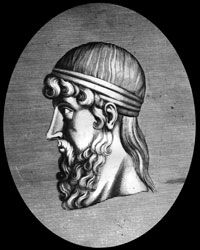Our day-to-day lives can often be pretty monotonous. So it's no wonder that many of us find lost cities to be fascinating examples of mystery, adventure and sometimes fantasy. Whether these places have been made inaccessible by natural disaster, devastated by war or fabricated entirely, lost cities have sparked the imaginations of millions of would-be anthropologists and treasure-seekers around the world.
What exactly is a lost city? Well, the criteria are pretty loose. In some instances, the city was buried or destroyed. Many of the cities we commonly think of as lost weren't technically lost -- they were simply unknown to the Westerners who later "discovered" them and made them famous, according to Steven A. Wernke, assistant professor of anthropology at Vanderbilt University [source: Wernke]. Ironically, the lost cities that have left some of the heaviest imprints on popular culture are the ones that may not have even existed. This is probably because we associate them with ideas of fantastic wealth, enlightenment and prosperity.
Advertisement
There are legends and ruins of dozens of lost cities around the world. HowStuffWorks has compiled a list of five historically significant cities whose stories run the gamut from conflict and devastation to prosperity and intrigue.





